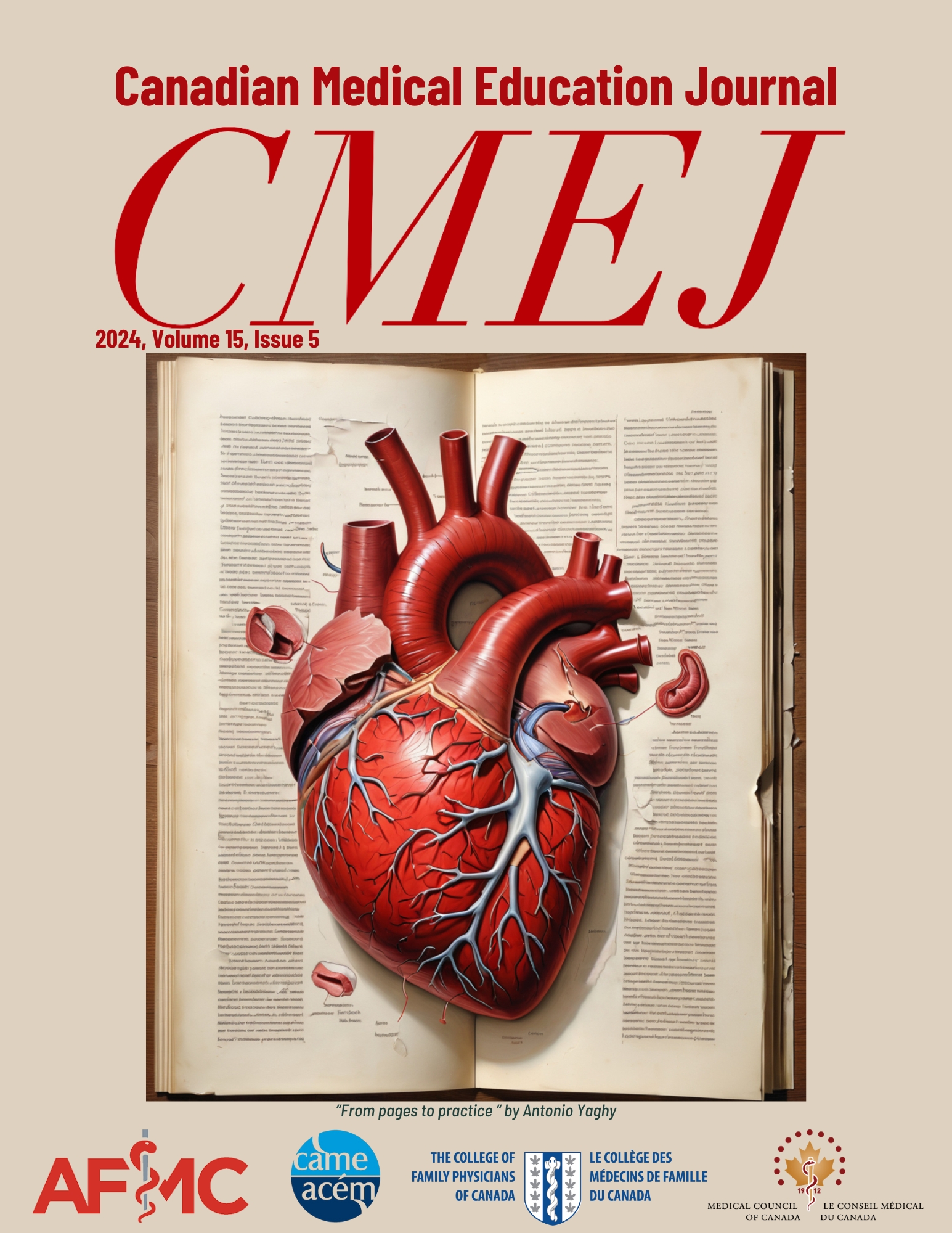Five ways to get a grip on applying a program evaluation model in health professions education academies
DOI:
https://doi.org/10.36834/cmej.77995Abstract
The proliferation of health professions educator academies across Canada and the United States illustrates the value they hold for faculty and institutions. Yet, establishing and evaluating the efficacy of them through program evaluation can be challenging. Moreover, academy leadership often lack the time, bandwidth skillset and personnel to undertake rigorous program evaluation efforts. We outline a step-by-step guide for getting a grip on evaluating health professions educator academies. Developing a plan for program evaluation in advance of any new academy initiative helps to ensure the academy calibrates and re-calibrates to accomplish outcomes and meet stakeholder expectations. It also provides a mechanism for tracking academy impact, which strengthens requests for funding, promotes sustainability and encourages continued buy-in and support from institutional stakeholders. For all of these reasons, we present the following recommendations: apply the relevant program evaluation framework(s); identify resources for program evaluation; prepare to tell your academy’s story; list desired program outcomes; establish a data collection plan; and obtain institutional review board approval.
Downloads
References
Uijtdehaage S, Ho MJ, Harvey E, Dorris CS, Huggett KN. Academies in health professions education: a scoping review. Acad Med. 2021;96(10):1476-1483. https://doi.org/10.1097/ACM.0000000000004161
Fernandez N, Audétat MC. Faculty development program evaluation: a need to embrace complexity. Adv Med Educ Pract. 2019;10:191-199. Published 2019 Apr 16. https://doi.org/10.2147/AMEP.S188164
Corral J, Guiton G, Aagaard E. The impact of an academy of medical educators on the culture of an American health sciences campus. Acad Med. 2017; 92(8):1145–1150. https://doi.org/10.1097/ACM.0000000000001508
Blanchard, Rebecca, PhD, MEd, Belforti, Raquel, DO, MS. Evaluation of a health professions teaching academy through the lens of social capital. J Contin Educ Health Prof. 2022;42(1):53-59. https://doi.org/10.1097/CEH.0000000000000357.
Thoma B, Gottlieb M, Boysen-Osborn M, et al. Curated collections for educators: five key papers about program evaluation. Cureus. 2017 May 4;9(5):e1224. https://doi.org/10.7759/cureus.1224
Fallis D, Irwin S, Cervero R, Durning S. Frameworks to guide faculty development for health professions education: a scoping review. J Contin Educ Health Prof. 2022;42(3):180-189. https://doi.org/10.1097/CEH.0000000000000376.
Alexandraki I, Rosasco RE, Mooradian AD. An evaluation of faculty development programs for clinician–educators: a scoping review. Acad Med. 2021;96(4): e10-e10e11. https://doi.org/10.1097/ACM.0000000000004009
Haas M, Triemstra J, Tam M. et al. A decade of faculty development for health professions educators: lessons learned from the Macy Faculty Scholars Program. BMC Med Educ. 2023 Mar 27;23(1):185. https://doi.org/10.1186/s12909-023-04155-x
Searle NS, Thompson BM, Friedland J, et al. The prevalence and practice of academies of medical educators: a survey of U.S. medical schools. Acad Med 85(1):p 48-56, Jan 2010. https://doi.org/10.1097/ACM.0b013e3181c4846b
Oermann MH, Reynolds SS, Granger BB. Using an implementation science framework to advance the science of nursing education. J Prof Nurs. 2022 Mar-Apr;39:139-145. https://doi.org/10.1016/j.profnurs.2022.01.014
Hamza DM, Regehr G. Eco-normalization: evaluating the longevity of an innovation in context. Acad Med. 96(11S):p S48-S53, Nov 2021. https://doi.org/10.1097/ACM.0000000000004318
Kirkpatrick DL, Kirkpatrick JD. Evaluating training programs: the four levels. 3rd ed. San Francisco, CA: Berrett-Koehler; 2006.
Downloads
Published
Versions
- 2024-11-12 (2)
- 2024-06-24 (1)
How to Cite
Issue
Section
License
Copyright (c) 2023 Rebecca D Blanchard, Katherine E McDaniel, Deborah L Engle

This work is licensed under a Creative Commons Attribution-NonCommercial-NoDerivatives 4.0 International License.
Submission of an original manuscript to the Canadian Medical Education Journal will be taken to mean that it represents original work not previously published, that it is not being considered elsewhere for publication. If accepted for publication, it will be published online and it will not be published elsewhere in the same form, for commercial purposes, in any language, without the consent of the publisher.
Authors who publish in the Canadian Medical Education Journal agree to release their articles under the Creative Commons Attribution-Noncommercial-No Derivative Works 4.0 Canada Licence. This licence allows anyone to copy and distribute the article for non-commercial purposes provided that appropriate attribution is given. For details of the rights an author grants users of their work, please see the licence summary and the full licence.











